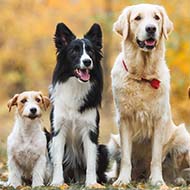Pig influenza vaccine study shows promising results
“To our knowledge this is the first evidence in a large animal that T cell responses in the lung induced by aerosol immunisation are protective” – Elma Tchlian.
Scientists at The Pirbright Institute and the University of Oxford have made what they call a “significant advance” in developing the next generation of influenza vaccines.
In a new study, the researchers immunised by aerosol pigs which had been pre-exposed to the pH1N1 strain of influenza with viral vectored vaccines (ChAdOx2 and MVA) that expressed the influenza matrix protein (M1) and nucleoprotein (NP).
By focusing on activating T-cells, rather than solely focusing on antibodies, the team hoped that the immune system would be able to respond to a greater variety of viruses.
Currently, influenza vaccines target specific strains. Finding a way to create a universal influenza vaccine that protects against multiple strains would do away with the need for a new vaccine each year as new variants emerge.
When the pigs were exposed to the H3N2 strain four weeks later, the researchers found that all three immunisations (M1, NP, and NPM1) reduced lung pathology M1 offered the greatest protection.
NP and NPM1 immunisation induced both T-cell and antibody responses, while M1 immunisation induced T-cell responses but no antibodies.
The researchers believe the breakthrough could pave the way for advances in creating the next-generation of influenza vaccines that offer protection against multiple strains.
Dame Sarah Gilbert, professor of vaccinology at the Pandemic Sciences Institute, University of Oxford, said: “To our knowledge this is the first evidence in a large animal that T cell responses in the lung induced by aerosol immunisation are protective.
“We believe that these results are a significant advance and highly relevant to the development of next generation vaccines for influenza and other respiratory pathogens.”
Elma Tchlian, head of Pirbright’s Mucosal Immunology Group, added “This study shows the importance of targeting the respiratory tract through aerosol administration to induce local immunity and prevent severe disease.
“This approach has significant implications for both human and veterinary medicine and highlights the potential of respiratory vaccines for influenza and other respiratory pathogens.”
The study has been published in the journal NPJ Vaccines.
Image © Shutterstock



 A free webinar exploring the development of the Kennel Club's registration system and the evolution of closed breed registers has been announced.
A free webinar exploring the development of the Kennel Club's registration system and the evolution of closed breed registers has been announced.